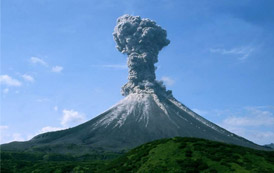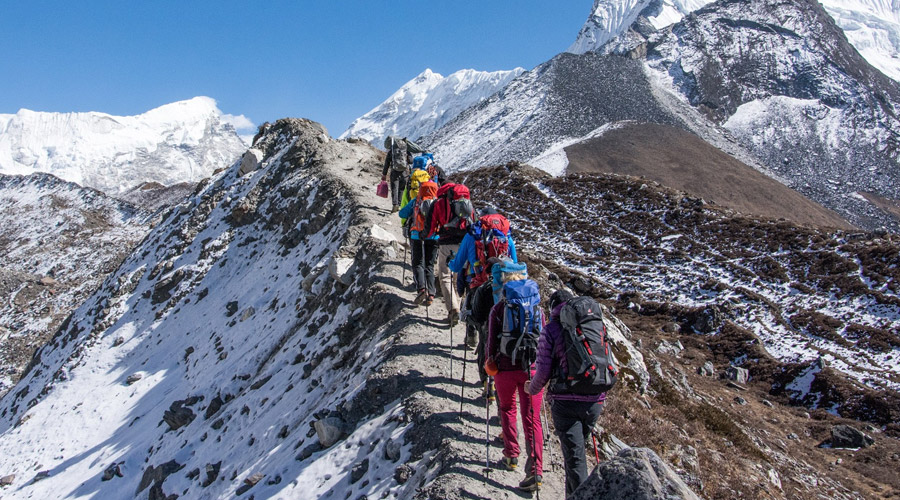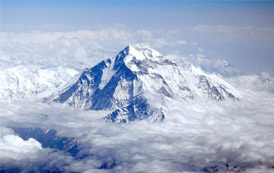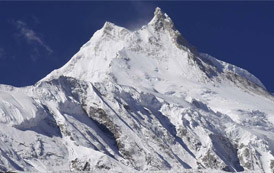World Mountains


World Leaders
January 11, 2020

World Ocean
January 11, 2020A mountain is a large landform that rises above the surrounding land in a limited area, usually in the form of a peak. A mountain is generally steeper than a hill.
Mountains are formed through tectonic forces or volcanism. These forces can locally raise the surface of the earth. Mountains erode slowly through the action of rivers, weather conditions, and glaciers.
Types of mountains: The different mountain types are formed in different ways, through tectonic plates crunching into each other, or sliding past one another, or even from magma coming up out of the Earth.
| Types of mountains | Description |
|---|---|
  |
1. Fold mountains are formed when two of the Earth’s tectonic plates collide head on; like two cars crashing together. |
  |
1. Fault-block mountains usually have a steep front side and then a sloping back side. |
  |
1. Dome mountains are created when a large amount of magma pushes up from below the Earth’s crust.But it never actually reaches the surface and erupts. 2. Since the roof is higher than its surroundings,erosionworks from the top creating a circular mountain range. |
  |
1. Volcanic mountains are created when volcanoes occur. 2. The magma erupts as lava, ash, rock and volcanic gases. 3. This material builds up around the volcanic vent, building up a mountain. |
  |
1. Plateau mountains are actually formed by the Earth’s internal activity. 2. They’re created when running water carves deep channels into a region. |
Mountaineering:
- Mountaineering is the act of trekking and climbing mountains, often with specialised equipment.
- The sport of mountaineering aims at reaching the highest point of mountains, preferably high, difficult to climb or (mostly historically) yet unclimbed ones.


- The techniques differ depending on whether the terrain is rock, snow or ice, and in many cases the mountaineer has to face all of them in difficult (cold and windy) conditions at high altitudes after a long wilderness hike.
- Except in the case of the easiest mountains, mountaineering requires experience, athletic ability, good equipment, and technical knowledge, and safety can seldom be guaranteed.
Some of the mountains in the World:
| Name of mountain | Description |
|---|---|
  |
Range: Himalayas Location: Nepal/Tibet Height: 29,035 ft |
  |
Range: Karakoram Location: Pakistan/China Height: 28,250 ft |
  |
Range: Himalayas Location: India/Nepal Height: 28,169 ft |
  |
Range: Himalayas Location: Nepal/Tibet Height: 27,940 ft |
  |
Range: Himalayas Location: Nepal/Tibet Height: 27,766 ft |
  |
Range: Himalayas Location: Nepal/Tibet Height: 26,906 ft |
  |
Range: Himalayas Location: Nepal Height: 26,795 ft |
  |
Range: Himalayas Location: Nepal Height: 26,781 ft |
  |
Range: Himalayas Location: Pakistan Height: 26,660 ft |
  |
Range: Himalayas Location: Nepal Height: 26,545 ft |
Interesting Facts:
- Heights of mountains are generally given as heights above sea level.
- The world’s highest peak on land is Mount Everest in the Himalayas. It is 29,036 ft tall.
- Ben Nevis is also the highest mountain in Great Britain.
- The tallest known mountain in the solar system is Olympus Mons, located on Mars.
- There are mountains under the surface of the sea!
- About 80 per cent of our planet’s fresh water originates in the mountains.
- Plants that may be found on mountains include conifers, oak, chestnut, maple, junipers, stonecrops, campions, mosses, ferns and climbers.
- The highest 14 mountains in the world are all found in the Himalayas.
- In some mountainous areas the rivers are permanently frozen. These are called glaciers.





